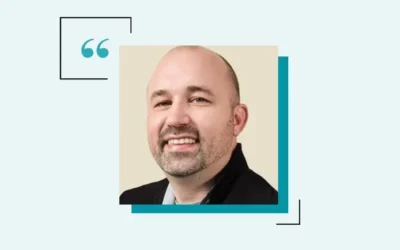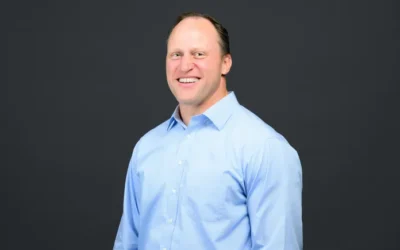As technology helps alleviate CFOs and their teams from the laborious and repetitive tasks that come with finance and accounting, many are shifting their focus toward proving value through the business with a coordinated approach to FP&A.
Though the FP&A track is one of a handful that finance leaders can take on their way to a CFO position, today’s approach to planning and analysis is much different than it was in the past, and is considerably more important as the demand for collaboration and actionable data continues to grow across the business.
What makes great FP&A people
For companies like beverage company Liquid Death, whose biggest challenge is controlling growth, good FP&A skills are required throughout the finance team to keep the system up to its task. However, according to their CFO, Karim Sadik-Khan, good FP&A skills are only part of the equation.

“In my view, someone who is just a core FP&A person, someone who has only done the reporting and support to the CFO, will never be as insightful as someone who has partnered with sales and marketing leaders,” he said. “That’s how good financial operators learn to understand business fundamentals.”
Sadik-Khan said although FP&A skills are valuable in a mosaic of financial skill sets, siloing work into FP&A can impede development. However, if insights can be drawn from FP&A and shared across the finance team or the broader business, he believes the value of a proper FP&A approach can be realized.
“In FP&A, you can become very siloed. You partner with only other finance people,” Sadik-Khan said. “Great FP&A people understand the drivers of the business. They know what questions to ask and what I am looking for. My FP&A leader was formerly a regional finance director running a $500 million business. She understands top-line drivers.”
“We can always refine skills on creating a board deck or the [management business review] process, but that’s where collaboration between everyone pays off,” Sadik-Khan said. “My team has done it all. Most of them have FP&A experience, but the value that comes from that is being able to sit down with other leaders in the business and say, ‘These are the metrics that matter to the business, and here’s how we came up with them.’ It’s all about having broad experience and understanding exactly how the business works.”
Redefining FP&A
Chris Ortega, CEO and fractional CFO of the fractional CFO and advisory firm Fresh FP&A, has built a brand by redefining the term. According to him, in recent meetings with business students at Indiana’s Kelley School of Business, interest in FP&A is high among smart young people — but not in the traditional sense of the discipline.

“I talked to these young people, and none of them want to go into the Big Four. They want to do FP&A, but not planning and analysis, but rather partnership and advising,” Ortega said. “This is what I’ve tried to shift my business toward since the beginning, bringing finance to the table as a strategic partner to the business after the accounting and reporting side is taken care of.”
Ortega also highlighted a technology problem in FP&A tools and how the incentive to create technology is falling far behind in implementation versus tools that assist in the accounting function.
“When you look at the technology adoption around accounting, it’s way faster than it is in FP&A,” Ortega said. “So because of this, the definition of FP&A is up in the air nowadays. When people think of FP&A, it’s usually about the planning and analysis side. But that’s sort of a thing of the past.”
People are interested in FP&A now because they want to be better financial partners and advisors to the business, he said. “The way accounting is done is pretty uniform. If AI books a depreciation entry or credit accumulated depreciation, the entry itself is universal,” Ortega continued. “So as technology continues to work its way through the technical side of accounting, the human element that finance brings to the business will be underscored by a modern version of FP&A — being a great collaborator and communicator, while knowing all the highs and lows that make up the wins and challenges for the business.”
What FP&A looks like tomorrow
For Aaron Peterson, CFO of luxury retailer Bergdorf Goodman and head of FP&A at parent company Neiman Marcus, the term FP&A doesn’t entirely encompass what his team did in previous FP&A leadership positions he held. But in his current role, he has witnessed the evolution of FP&A and how all the “flavors of finance” now sit under one umbrella.

“I think the term has evolved for me, and there are multiple parts of the FP&A team you can have,” Peterson said. “I often refer to my entire team as the FP&A team, but I believe the value developing in FP&A today is around strategy.”
“FP&A teams of tomorrow need to understand where their business is headed, as well as the concerns, challenges and opportunities around the corner,” he continued. “We want to be good at making both short-term and long-term decisions for the business, but we need to do so with radical clarity. There will be macroeconomic pressures that will steer the business in some direction, but I think it’s about developing a point of view, not a point estimate. Being able to define a range of possibilities through data is where FP&A value will grow.”
Reflecting on his career, Peterson said his curiosity within the FP&A function allowed him to cross-collaborate and develop meaningful connections throughout the different places he worked. While he believes the makeup of FP&A may change over time, the benefits of being interested in exploring the discipline remain largely the same.
“When I look back on my career and development, I wanted to influence strategy and operations,” he said. “At the end of the day, we need to map out the financial performance of the company as finance leaders, but from a cross-functional standpoint, being able to drive change across the business from the proverbial seat at the table is valuable when it comes to steering the business in unique and different ways.”





